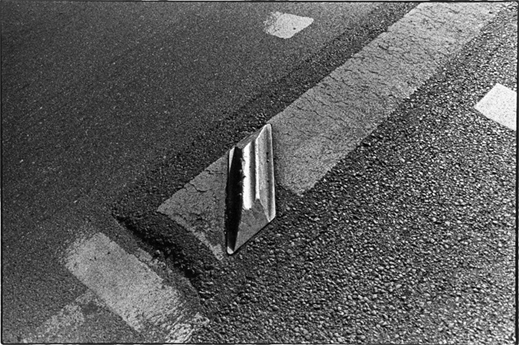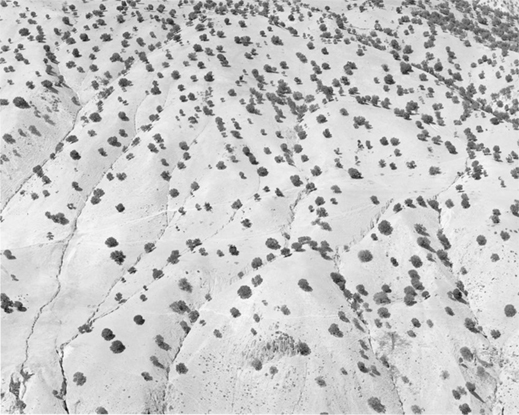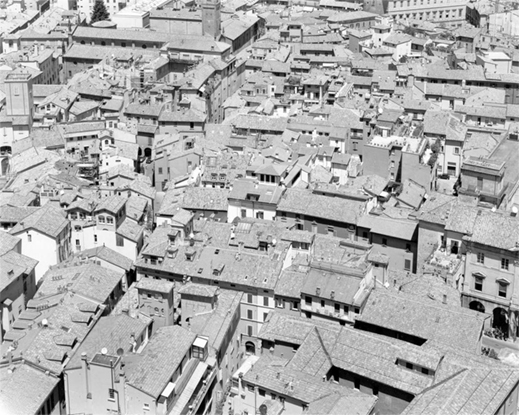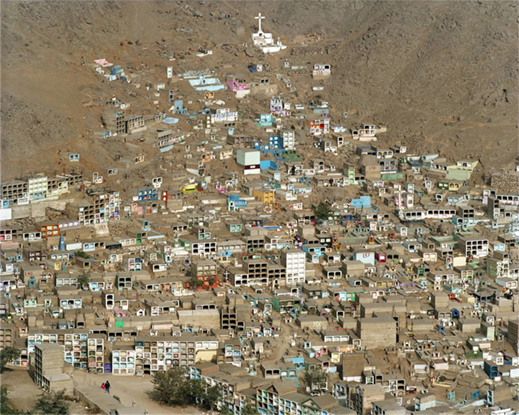 |
Focus features two in-depth reviews each month of fine art, architecture and design exhibitions and events at art museums, galleries and alternative spaces around Japan. The contributors are non-Japanese residents of Japan. |
|
|
 |
 |
 |
The Wanderer: Taiji Matsue's Roaming Camera
Christopher Stephens |
 |
|
UIO 70652 (2012) from the makieta series |
Art is a way of seeing, and the best art changes our way of looking at the world. The photographs of Taiji Matsue (born in Tokyo in 1963) are a case in point. For over 35 years, Matsue has crisscrossed the globe, capturing natural and urban landscapes in works that bear his unique stamp. Taiji Matsue: gazetteer (running through 24 February at the Hiroshima City Museum of Contemporary Art) serves as the artist's first retrospective, assembling all of his major series, including an early but only recently released work dealing with the abandoned coal-mining island of Hashima (commonly known as Gunkanjima or "Battleship Island").
Matsue took an early interest in photography, acquiring his first camera at 14 and quickly learning to shoot pictures and develop negatives. He also had a powerful curiosity and a penchant for traveling, and by the time he was in junior high school, he had already visited 46 of Japan's 47 prefectures. This might make it seem as if his path was already laid out. But it wasn't until Matsue discovered Daido Moriyama's 1982 photo book Light and Shadow, while majoring in geography at the University of Tokyo, that he began to seriously consider photography as a career.
 |
|
|
Transit 17 (1985) from the Transit series |
Matsue's first official series, Transit, was originally shown in 1987 but dates from a couple of years earlier. Focusing on mundane features of the city, such as concrete walls, road markings, and manhole covers, the black-and-white pictures highlight unusual and appealing forms and textures that would normally go unnoticed. Urban infrastructure never looked so beautiful.
With the gazetteer series (1990-ongoing), Matsue began to pull back and take in a much more expansive view of the world. Visiting dozens of countries, including Yemen, Iran, and Kenya, he filled his frames with open terrain and zeroed in on the earth's surface. Though they were shot from a substantial distance, the scenes are too contained for us to get a complete grasp of the surroundings. And without the benefit of human figures or buildings to provide a sense of scale, we are left to immerse ourselves in the patterns created by the cracks and crevices in the arid soil, or the splotches of vegetation dotting the land.
 |
|
|
Iran 1998 #12 (1998) from the gazetteer series |
This was followed by CC (2001-ongoing), a series in which Matsue made similar use of a bird's-eye view to depict cityscapes around the world. The title stands for "city code," and each work bears a three-letter abbreviation for the city in question (ATH for Athens, SYD for Sydney). Clusters of buildings occupy the entire picture plane, but for the most part the view is too distant to catch sight of anything smaller than a parked car. Here, we find ourselves tracing the avenues to their limit, marveling at the jumble of roofs, and shifting our focus back and forth between the hard walls of the architecture and the occasional outgrowth of soft greenery.
In a talk event at Hiroshima MOCA held in conjunction with the exhibition, Matsue was quick to dispel the common misconception that his landscapes are all aerial photographs. The majority, he explained, are the product of many hours of driving and searching for the perfect vantage point. When asked to elaborate on how he creates the elevated effect, however, Matsue declined, saying that specifics would only detract from the works.
 |
|
BLQ 0368 (2003) from the CC series |
There is a similar reluctance on Matsue's part to provide details about his subject matter. For example, the works in the JP- series, a Japan-based companion piece to CC, take their titles from the ISO codes used to identify Japanese prefectures. Though the system itself is extremely logical -- beginning in the north with Hokkaido (JP-01) and ending in the south with Okinawa (JP-47) -- a title like JP-36 is not immediately decipherable. The only other information provided is the year the picture was taken and the media used to make it (silver gelatin print, chromogenic print, and so on). When first encountering Matsue's photographs, we hunt for architectural, geological or linguistic clues that might shed light on the location. But in time we realize that Matsue's intention is not to document a place, but to call our attention to the singular combination of elements that happened to converge at a particular moment.
In technical terms, Matsue's work is distinguished by the absence of shadows and an almost disturbing flatness. These qualities turn the pictures into abstractions, pushing them beyond time and place into the realm of the artistic imagination.
In recent years, Matsue has also turned his hand to the moving image. Displayed horizontally on lightbox-like devices about 40 centimeters off the ground, the videos, with running times ranging from several minutes to half an hour, initially seem to be completely static. Then we catch sight of a tiny human figure making its way down a narrow path in the middle of a barren desert, or a few sheep wandering through a meadow. The effect is meditative and recalls Brian Eno's dictum that ambient music should be "as easy to ignore as it is to notice."
 |
|
LIM 35040 (2018) from the LIM series
|
Matsue's other photographic series include LIM (2010-ongoing), a subset of CC that focuses on cemeteries around the world. One site in Peru (the title of the series is an abbreviation for Lima) sprawls across a narrow valley, with graves stacked on top of each other like apartment blocks. Varying in height and positioned at different angles, the multicolored complexes lack any of the orderliness that we normally associate with a place of final rest; some are even emblazoned with a family name in spray paint. But more than that, the loose gravel and precarious terrain make it look as if the graves themselves might soon end up underground.
Near the end of the exhibition, after we have acclimated ourselves to Matsue's expansive vision, the makieta series (2007-ongoing) comes as something of a shock. Here, the artist takes the opposite tack from his bird's-eye pictures, zooming in on scale models (makieta is Polish for "model") of cities like Quito and Tokyo to create the illusion of a thriving metropolis.
Taiji Matsue shows us things about the world that we haven't seen in ways that we won't soon forget. Long may he roam.
All images © Taiji Matsue, courtesy of the artist. |
 |
 |
Christopher Stephens
Christopher Stephens has lived in the Kansai region for over 25 years. In addition to appearing in numerous catalogues for museums and art events throughout Japan, his translations on art and architecture have accompanied exhibitions in Spain, Germany, Switzerland, Italy, Belgium, South Korea, and the U.S. His recent published work includes From Postwar to Postmodern: Art in Japan 1945-1989: Primary Documents (MoMA Primary Documents, 2012) and Gutai: Splendid Playground (Solomon R. Guggenheim Museum, 2013). |
|
 |
|